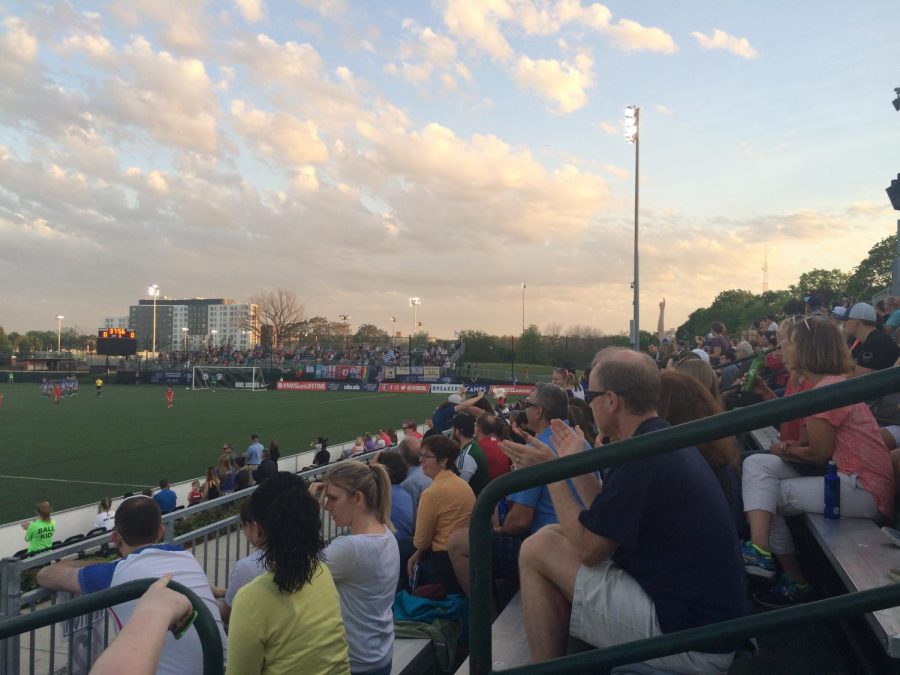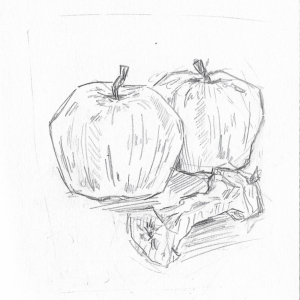Boston to Lose Breakers Team
The Women’s Soccer Team Folded, Sending a Message
Pictured: A Boston Breakers game at Jordan Field outside the Harvard Stadium.
April 25, 2018
March 28th marks the start of the Women’s Professional Soccer League season, and while teams throughout the nation are preparing for another season, Jordan Field, the former home of the Boston Breakers Women’s Professional Soccer Club, will be empty. For me, as a soccer player, the start of spring not only means a return to practicing soccer outdoors, but also watching soccer outside. However, this year, things have changed for me and for other women’s soccer fans. Only weeks before players were expected to hit the pitch and start their pre-season training, news stories released that the Breakers had folded. They went bankrupt.
While the Breakers’ bankruptcy may not seem like much of a loss to the Boston community, it certainly affects the growing population of young female soccer players in the area. Just last year, the Boston Breakers partnered with New England Futbol Club (NEFC) to create a youth academy for girls: Breakers Soccer. I, like many of my female counterparts, was excited for this development and impressed that a girls youth academy was finally going to be taken seriously in the Boston area. Lily Matthews, a CRLS sophomore, was really excited to play for the new Development Academy. “Seeing players that we look up to and a program that we could have potentially been a part of disappear was disappointing. Being a professional women’s soccer player is by no means glamorous, but to be exposed to the instability of the women’s game was certainly upsetting,” she said.
Attending Breakers games has been a part of my childhood, and to see the league close because of bankruptcy sends a strong signal to me about how unvalued women’s professional soccer is in Boston. The Breakers, formerly the longest standing women’s professional soccer club team in U.S. history, have been based in Boston since 2000. Now there are no more professional teams in New England, and the closest women’s team in this area is a team based in New Jersey, called the Sky Blue FC. Even though there are two teams relatively close to Boston—Sky Blue and the Maryland-based Washington Spirit—they have the smallest stadiums out of all of the other nine teams in the NWSL.
The Breakers were one of the first teams to participate in the Women’s United Soccer Association (WUSA) before the league folded three years later. Within its 17-year period of existence, the team changed leagues four times. This seems to be the biggest indicator to me that women’s soccer was never valued to begin with, so watching the Breakers franchise collapse is not terribly surprising. It is upsetting and disheartening that even though we are in 2018 and female athletes should hold the same weight as male athletes, this country has still failed to create and support a strong women’s soccer league.
While the Breakers were still up and running, they changed home fields at least three times. The team started at the Harvard Stadium, then moved to Dilboy Field in Somerville, and finally returned to Harvard to practice, but this time playing on a field outside of the stadium. This last field became their home for a few seasons. Even though I loved going to Breakers games, it was obvious to me how underfunded the franchise was and how few people cared about the team. At the start of games, the announcers would let the crowd know how many people were in attendance, and I never once heard a crowd size that exceeded 3,000 people.
The financial predicament the team endured was inevitable. The games were televised on obscure networks, there was little advertisement on the media or in the city of Boston, and the tickets were very cheap. The Breakers didn’t even have their own home field—they had to use Harvard’s facilities as their “home” field, the same field that youth clubs practiced and where Harvard sports teams played.
The United States has arguably the best professional women’s soccer teams and the strongest girls youth soccer programs in the world. Therefore, it baffles me that there is a still such a lack of respect for these teams. You don’t even need to look across the pond and compare US women’s professional soccer to the men’s leagues in Europe to see this inequality, all you need to know is that the New England Revolution, the men’s professional club team, had on average 20,000 spectators in the 2017 season. If the New England Revolution were to play any team from Europe they would get destroyed.
This piece also appears in our March/April print edition.










